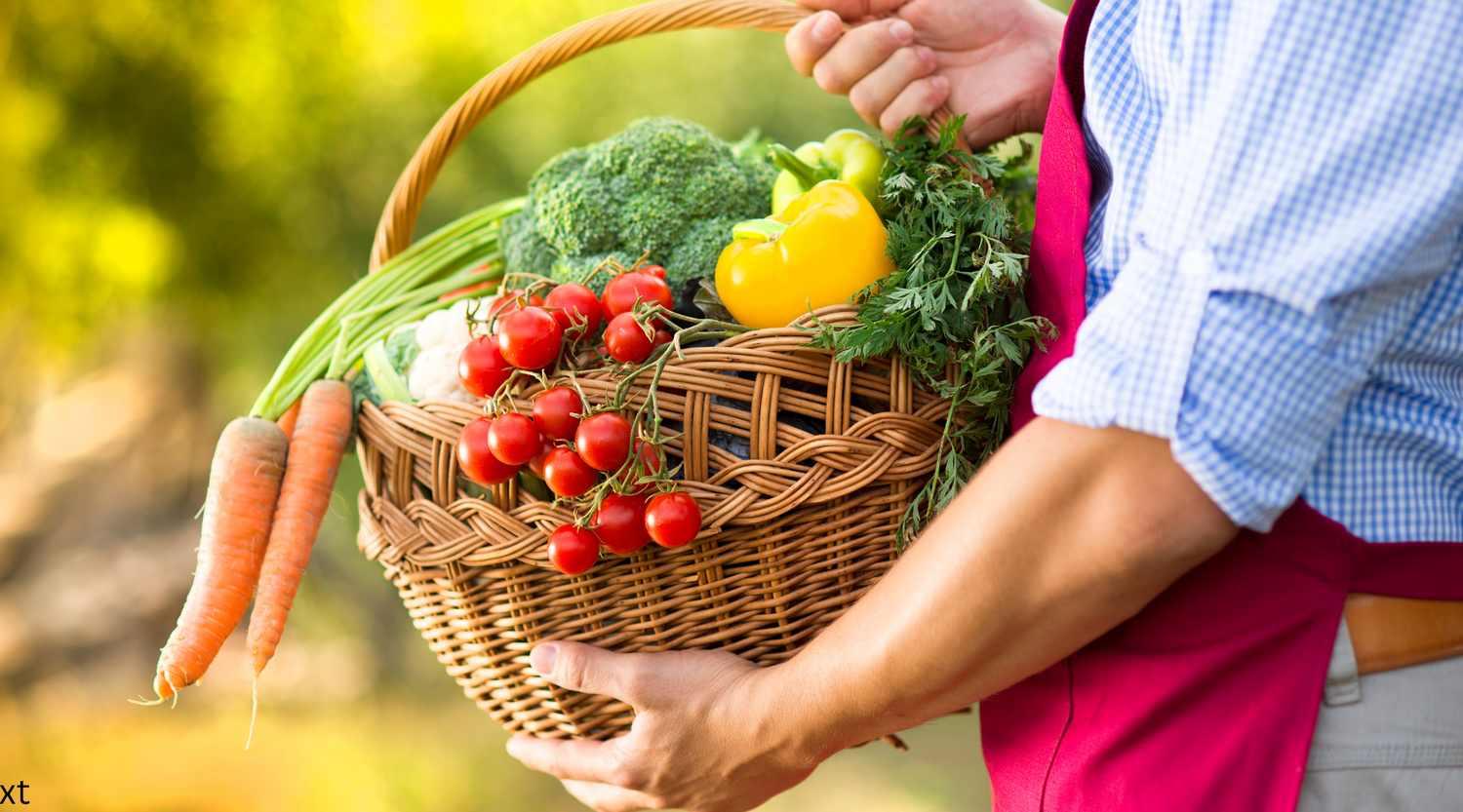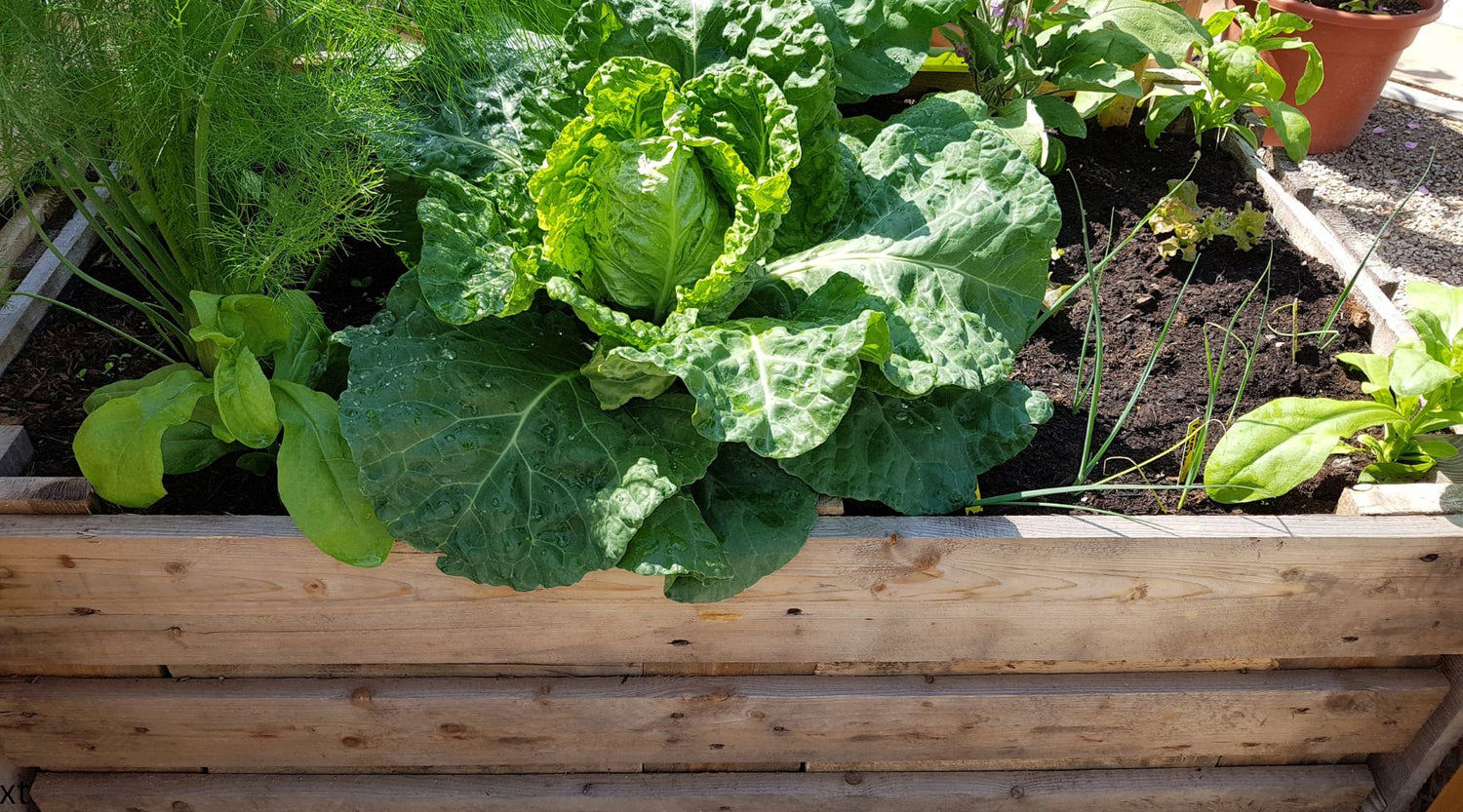It’s no secret that we are moving towards sustainable living practices, with more individuals seeking ways to reduce their ecological footprint. One significant aspect of this movement is the growing interest in home gardening and going some way towards being self-sufficient in providing our own homegrown herbs and vegetables. Not only does home gardening provide access to fresh, organic produce, but it also fosters a deeper connection with nature and is a very relaxing pastime. A standout amongst the raised garden beds available is the Vegepod, loved for its innovative design and great features. So if you’re considering a Vegepod raised garden bed as a sustainable gardening solution read on.
What is a Vegepod?
Simply put, a Vegepod is a self-contained modular raised garden bed that has everything inbuilt to make growing vegetables, herbs, and flowers more accessible and efficient.
Key Features:

- The Vegepod bed consists of a durable, UV-stabilized polypropylene container which is resistant to rot, insect damage, UV rays, and moisture.
- The elevated design of the Vegepod garden beds minimises the strain on the gardeners back, making it ideal for those with mobility issues and keeping pests at bay.
-
A special feature of the Vegepod is it’s Protective Cover, which can be easily removed for planting, harvesting, or ventilation purposes.
-
Vegepods feature a wicking system that allows plants to draw water from a reservoir below the soil surface. This self-watering mechanism ensures consistent moisture levels, reducing the risk of over or under-watering and can cut water usage by up to 80% compared to other garden beds.
-
Vegepods represents a very portable option for renters who want to take their veggie patch with them when they move.
- Modular Vegepod garden beds come in different sizes and configurations so you can tailor your veggie garden to your available space and needs, making them a great option for smaller gardens/courtyards where there is limited room.
By choosing Vegepod raised garden beds, gardeners can support sustainable gardening in multiple ways. Firstly, these beds conserve water through their self-watering system and by reducing evaporation. Secondly, they promote soil health and fertility with organic soil and compost, reducing the need for synthetic fertilisers and pesticides. Moreover, growing vegetables at home decreases reliance on store-bought produce, cutting down carbon emissions from transportation and packaging. We take a look at some great growing tips for your Vegepod along with how to get started.
1. Setting up & Placement of your Vegepod

Assembly is relatively easy and your vegepod will come with the instructions relevant to the size bed you have chosen. The instructions are very helpful and easy to understand so it won't take too long to have your bed up and ready in no time. Prime consideration for positioning your vegepod is sunlight, place it in the best spot to get the most sunlight, remembering that your vegecover will keep your plants protected from too much sunshine. Next you will need to ensure that you have a level surface to place your Vegepod on, this keeps it's safe and will allow the water to reach the plants evenly. If you have a soft surface underneath place the vegepod on some pavers to stop it from sinking into the ground. Make sure you have the final position sorted before filling as it will be heavy to move afterwards.
2. Filling your Vegepod
There are various types of growing mediums suitable for the Vegepod, such as soil, potting mix, potting soil, and compost, do not use general soil from your garden. For container gardening, it's best to use a mix specifically designed for this purpose, with some blends tailored for vegetable growing. You can find quality mixes with fertilisers at garden centres, usually sold in bags. These superior mixes promote better growth and have a longer lifespan compared to cheaper alternatives. Fill right to the Top - The Vegepod self-watering drain trays are designed to provide water to 300mm of soil medium.
Perlite, is a handy addition to your soil mix. It makes the soil lighter and helps it hold onto water (you can also use vermiculite for this). You can swap out about 25% of your soil mix for coarse grade perlite. You'll find perlite hydroponic stores and some garden centres.
If you have perlite, spread a layer about 1 inch thick on top of your trays, filling up the wicking wells. If you don't have perlite, no worries, you can just use regular potting soil. Just make sure to mix the rest of the perlite evenly through the soil mix. This will help your plants grow happy and healthy.
Perlite is a lightweight, white granular material made from expanded volcanic glass. It's heated to around 1000°C until it expands, like popcorn, becoming much larger than its original size. Despite its appearance and texture resembling small pieces of polystyrene, it's quite different.
This material is easy to handle, sterile, and has a neutral pH, meaning it's neither acidic nor alkaline. Its porous nature allows it to absorb water while also improving drainage, making it an excellent addition to compost mixes. When mixed with compost, perlite ensures water flows freely, preventing waterlogging and promoting healthy plant growth.
Soil requirements to fill your Vegepod:
Small Vegepod (1m x .05m) - requires 4 x 25L bags of potting soil/mix to fill
Medium Vegepod (1m x 1m) - requires 9 x 25L bags of potting soil/mix to fill
Large Vegepod ( 2m x 1m) requires 18 x 25L bags of potting soil/mix to fill
The initial quality of the soil mix plays a crucial role in its longevity. Using a superior mix allows for extended use over several years, provided that nutrients are replenished periodically. This practice ensures sustained soil health and optimal plant growth.
3. Planting Guide for your Vegepod

For the best results in your Vegepod garden, it's helpful to arrange your plants strategically. Place herbs and root veggies towards the front where they can easily access sunlight. Taller plants like cherry tomatoes and beans should be placed towards the back to make the most of vertical space. This not only helps sunlight absorption but also makes the most of the available space.
Starting with Seeds:
You have two options for planting seeds in the Vegepod: you can either plant them directly into the soil or use a seed raising kit and then transplant them. When planting seeds directly into the soil, you might need to thin out the crops as they start to sprout to avoid overcrowding.
Starting with Seedlings:
Planting seedlings directly into the Vegepod is the quickest and easiest method to get started. Seedlings can be purchased from Garden Centres and Hardware stores in punnets or trays of 6 or 8 plants, sometimes as single plants, ready for planting. It's important to give your plants enough room to grow. Before planting seeds or seedlings, check the recommended spacing for each type of plant. Root veggies, especially, need plenty of space underground as they can grow quite large. The health and resilience of your newly planted seedings can be enhanced by adding a seaweed concentrate like Seasol, serving as a tonic for your plants promoting robust vitality and growth. Not sure what to plant when, we've partnered with Thrive Sustainability to bring you a seasonal selection of heirloom, open-pollinated vegetable and herbs seeds to get you started. Thrive Sustainability offer the best in quality seeds. Price includes shipping Australia wide (except Tasmania due to biosecurity regulations in this state). Check out our seed bundles.
If you're not sure about spacing or prefer a simpler approach, you can try the "ruthless horticulturalist technique." Basically, scatter seeds generously in a designated area and then thin out the weaker seedlings once they start to sprout. This allows the stronger plants to thrive, like Darwin's survival of the fittest.
Planting in your Vegepod is like planning a strategic game. Timing is crucial for a continuous harvest, so stagger your planting times by about a week to avoid an overwhelming amount of produce all at once. Also, focus on planting seasonal vegetables for the best growth.
4. Vegepod Watering Guide – for healthy plants

Established plants possess superior water-seeking abilities compared to newly planted crops. Here's a simple guide to ensure optimal watering for your garden:
- Seedlings/Starters: Water daily for approximately 3 minutes (or one watering can) until they establish roots (usually within 7-10 days). In cooler weather, adjust to watering every second day.
- Established Plants: Once your plants have taken root, reduce watering to once a week. In hotter climates, you may need to water every second or third day to prevent dehydration.
- Vegepod Reservoirs: Vegepods feature efficient reservoirs that can sustain plants for up to 6 weeks without additional watering. Even when the topsoil feels dry, there's moisture below where plants can access it.
- Weather-Based Watering: Adapt your watering schedule to the weather conditions. Avoid watering during cool, rainy periods. Conversely, in hot, dry, or windy weather, consider watering every second day to ensure adequate hydration.
- Preventing Overwatering: Overwatering can stunt growth. If the soil is visibly wet on top, refrain from watering. The appearance of moss, mildew, or fungus indicates excessive moisture; refrain from watering for at least 2 weeks.
- Vegecovers and Rain: Vegecovers allow some rain to penetrate, mimicking a fine mist. Consider this when deciding on your watering frequency.
- Extended Absence: If you plan to be away for two weeks or more, fill the reservoirs before leaving. Water until you observe leakage from the overflow holes. Established plants can typically last four weeks with full reservoirs.
- Adjusting Watering Over Time: In the first week, use a mist-spray system to water seedlings daily. From the second week onwards, adjust watering frequency based on weather conditions. Hotter weather may necessitate watering 4-5 times a week, while cooler weather may only require watering once a week. Remember to connect your hose to the Vegepod to use the misting system.
- Remember, it's possible to leave established plants for up to four weeks without watering, provided the weather isn't excessively hot. Consider attaching a 24-hour timer to your tap for automated watering, but always be cautious not to overwater.
5. Ongoing Maintenance – very little
The wonder of the Vegepod is how very little maintenance is required. When starting with a high-quality potting soil or mix, fertilisation is often unnecessary initially as these mixes typically contain nutrients. However, after each crop cycle (around every 3-6 months), it's beneficial to refresh the soil by turning it over and adding natural fertilisers such as manures, worm compost or tea, and garden composts.
To safeguard your young seedlings from pests such as caterpillars, aphids, snails, slugs, and even larger animals like possums, it's advisable to keep the Vegepod's Vegecover canopy closed, except when actively tending to your crops. The Vegecover canopy creates a favourable humid microclimate that promotes faster and healthier growth of your edibles.
One of the perks of Vegepods is their self-watering feature, requiring watering only every few weeks. However, it's essential to gauge watering needs accurately. Simply check the soil's moisture level by inserting a finger into various spots within the Vegepod. If the soil feels dry several inches down, it's time to hydrate your plants with a watering can.
Additional cover options are available also for a Hothouse, made of clear PVC allowing sunlight to penetrate and trap the heat, leaving behind the cold air and frost for additional protection during the cooler seasons. Alternatively you can also get a Shade Cover offering up to 75% shade coverage for those delicate plants, that can be used in place of the Vegecover for up to 48 hours at a time when temps reach 35 degrees celsius or above.

In the pursuit of sustainable living, adopting practices like home gardening is crucial. Vegepod raised garden beds offer a convenient, efficient, and eco-friendly solution. Whether you're a beginner or a seasoned gardener, these self-contained systems provide an accessible way to grow fresh, nutritious produce while lessening environmental impact. By incorporating Vegepod raised garden beds into your outdoor area, you not only enjoy homegrown harvests but also contribute to a cleaner, healthier planet.
Shop the Vegepod Collection in store, all our Vegepods come completed with stands.






